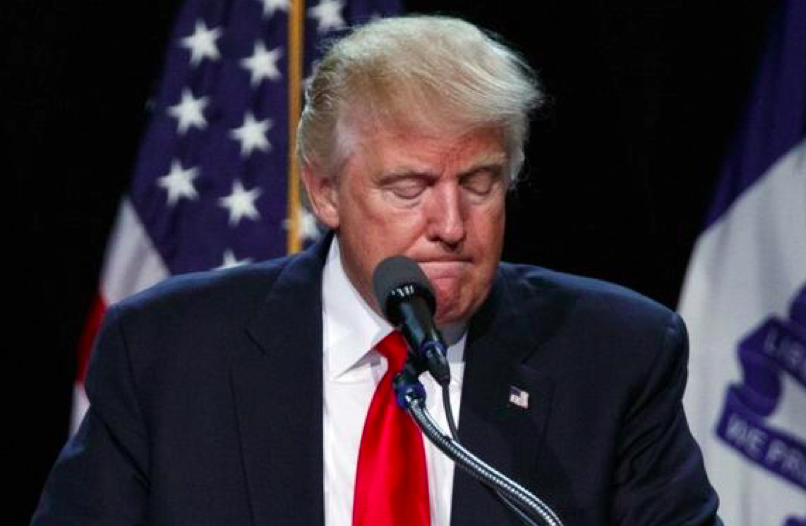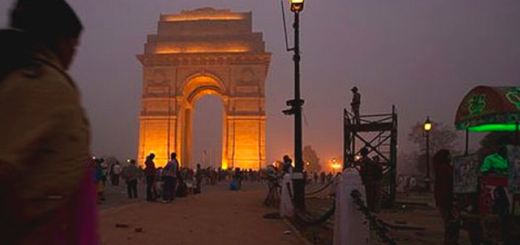Short arc that led to Donald Trump

 NEELANJAN SIRCAR in The Hindu, 12/11/2016 – AP
NEELANJAN SIRCAR in The Hindu, 12/11/2016 – AP
"Mr. Trump’s mandate is to ‘take back’ American institutions, and, as a populist, he is expected to do it. There is little incentive for him to moderate his position now."
(Editorial Note: The writer of this article Neelanjan Sircar was born and raised in US, but lives in India now. He is expressing views CCV wrote in its two previous postings. He is a senior fellow at the Centre for Policy Research. He finds politics in US can be ugly due to the colour of one’s skin and the election of a person like Trump, confirmed him in his conviction, he is no more welcome in US.
During Goldwater-Johnson election, one campaign catch phrase against Goldwater was: “neither gold, nor water”. This scribe was studying Journalism at Marquette U then. The major villan in American elections is their flawed election system. True democracy must be based on the majority of popular vote made up of one person one vote. This is made into a farce by introducing electoral votes based on the tricky principle, the winner in each state takes all.
It is OK if each of the 50 states are ruled by 50 governments. But the four yearly US elections are for national government by one President, not fifty. So he/she should have the support of the majority of total population of US. Often that is sabotaged by the electoral votes. That may be the reason why they describe theirs a “government of hypocrites, by hyprocrites, for hypocrites.” Otherwise why is there popular protests and revolts against their own elected president who won through their approved electoral votes. It does not happen even in rigged elections in India or other countries once the results are announced. So shame on the ugly protests across the length and breadth of US against their elected president?
There is similar or worse defects even in Indian elections. The present BJP government extolled as the most popular has only 31 percent of the total votes polled. That is because of the defective majority system – first-past-post – we follow to decide majority in our elections. Often elections to a constituency is contested by three or four candidates. In such cases votes go divided to all contesting candidates and the one who gets more votes is declared a winner. In such instances winner never gets the majority of votes polled but only one third or fourth of votes. To decide on the one who has the majority support, voting must be repeated until it becomes a contest between two candidates. This is done in several countries but not in India, with the result our national elections throw up a minority government which never has the support of the majority who caste their votes.
The present demonetization is said to be a crooked plan hatched by BJP to win the coming UP election using unaccounted money in their possession to buy votes and to make sure opposition parties do not have such limitless cash on hand. Irrespective of which party wins elections in US, the governments there are ruled by the Wallstreet, it is said. That is why even a popular President like Obamo could not fulfill most of his election promises. This is what happens and will happen in India, until the election system is made fool-proof.
 In the case of Donald Trump, a German Immigrant to New York is threatening to close all doors to new immigrants. May his present office make him grow to the stature of a Chancellor Angella Merkal of Germany admired for her open door policy to immigrants. james kottoor, editor)
In the case of Donald Trump, a German Immigrant to New York is threatening to close all doors to new immigrants. May his present office make him grow to the stature of a Chancellor Angella Merkal of Germany admired for her open door policy to immigrants. james kottoor, editor)
We have lost our ability to understand that politics in the West need not only be about economic issues, it can also be about identity, ethnicity, and race — and it can be ugly.
My father came to America from India in 1967, and my mother came soon after in 1972. America was different then. These were the early days of American immigration, as President Lyndon B. Johnson had opened the America’s “gates” to foreigners in 1965. Yes, there was discrimination, but there was also a sense of opportunity. Growing up in America, my brother and I were taught to believe that if we studied and worked hard enough, we would do well for ourselves. Unlike India, with its rigid caste system, or Western Europe, with its entrenched bourgeoisie, anyone could make it in America.
Indian-Americans, making full use of these opportunities, soon became the wealthiest and most-educated social group in America. But it wasn’t just economic success for immigrants and for the country as a whole, this period of enhanced American immigration led to a cultural efflorescence that would brand American pre-eminence in terms of openness and diversity. Yet, little did we realise there was growing resentment against people like us that, decades later, would culminate in the election of Republican Donald Trump.
Unlike Goldwater – Neejanjan Sirkar
This wasn’t the first time America was faced with a Trump-like candidate. In 1964, Barry Goldwater emerged from the multi-cornered primaries as the Republican nominee, defeating, among others, the more moderate Nelson Rockefeller. Goldwater's coalition included members from the paranoid, anti-communist organisation John Birch Society that opposed civil rights legislation (for the equal treatment of black Americans) on the grounds that it was aimed at creating a “Soviet Negro Republic” in the American South. Much as in this election, moderate Republican leaders baulked at supporting such an extremist candidate.
A significant share of Republican Party members defected and voted for Goldwater’s opponent, Democrat Lyndon B. Johnson. Goldwater’s electoral coalition crumbled; he garnered just 38 per cent of the vote, compared to Johnson’s 61 per cent, while winning only six out of the 50 states. Emboldened by a major electoral mandate, President Johnson introduced the “Great Society” civil rights legislation to address racial discrimination, as well the immigration reforms that would allow my parents to come to America.
Faced with a paranoid, racist social force in the 1960s, the American electorate responded to keep the country on the path of liberty and equality. In this election, Donald Trump had open associations with white supremacist groups and wrapped the banks, the President, and the media into one large conspiracy narrative. But this time American democracy failed, and we are left seeking answers as to why. When my parents immigrated, America was building its Great Society; today they face the prospect of seeing it unravel in front of their eyes.
The decisive voter & US electoral system
To understand this outcome, one must begin with America’s electoral system, which structures the set of viable political appeals. In this system, (in all but two states) the candidate who receives the support of a plurality of voters in the state wins all of that state’s “electoral votes.” The candidate who receives a majority of these electoral votes (270) wins the election. If a voter resides in a state in which one of the candidates will likely receive a plurality, his/her vote is effectively useless.
For instance, in California, where it was certain that Hillary Clinton would win a plurality, an extra vote for either Ms. Clinton or Mr. Trump would have had zero marginal impact on the candidates’ electoral fortunes. Accordingly, candidates and parties focus on winning the support of voters in a small set of “swing states” that are not committed to either candidate. This further implies that the optimal political appeal to win an election is driven exclusively by the demographics and issues in the swing states, like Michigan and Pennsylvania, as opposed to the preferences of the entire American electorate.
American voters now exhibit severe party polarisation. Even in an election that saw Bernie Sanders split the Democratic Party, and several key Republican leaders abandon Mr. Trump, most members of the Democratic and Republican parties fell into line. The CNN exit poll shows that about 90 per cent of each of Democrats and Republicans voted for their party’s candidate in this election; by contrast, a Gallup exit poll found that 20 per cent of Republicans defected from the party to vote for Lyndon B. Johnson in 1964. Furthermore, about 70 per cent of the American electorate is registered with either the Democratic or Republican Party. The decisive voters are thus the small number of uncommitted voters in a few swing states.
Nativism in the swing states
Many have termed Donald Trump’s victory as a revenge of the working-class white voter, as the Rust Belt swing states of Michigan, Ohio, Pennsylvania, and Wisconsin, with large working-class white populations, all swung toward Mr. Trump in this election. The Rust Belt was once the manufacturing hub of the U.S., but these jobs gradually disappeared due to the pressures of globalisation and job automation. Indeed, the proportion of the U.S. workforce in manufacturing had declined from about one in four in 1960 to about one in 10 in 2010. But a simple narrative of those affected by globalisation voting for Trump due to economic grievance does not fit the empirical facts well.
According to CNN’s exit poll, Ms. Clinton posted an 11 percentage point lead for voters with annual salaries less than $50,000, while Mr. Trump led with voters who made more than $50,000 a year. This pattern also holds in the Rust Belt states that Mr. Trump won. For instance, in the swing state of Pennsylvania, Ms. Clinton held a 12 percentage point lead among voters making less than $50,000 a year, but Mr. Trump held an 11 percentage point lead among voters with annual salaries above $50,000. Furthermore, if this was about economic loss, one would have expected these voters to support higher taxes, more redistributive policy, and stronger social programmes. In fact, Mr. Trump is promising the opposite: severe tax cuts and a repeal of nationalised healthcare.
The economic grievance narrative is appealing to those who have a commitment to class struggle as an organising principle of politics. Much of this is a post-World War II construction that voter preferences are primarily driven by economic instrumentality. As the World War II generation, and those who fought for civil rights in America, have largely passed on, we have lost our ability to understand that politics in the West need not only be about economic issues, it can also be about identity, ethnicity, and race, and it can be ugly.
In my previous piece (‘Why Donald Trump has already won’, The Hindu, October 29), I explained that the rise of Mr. Trump was directly linked to the rise of “nativism,” an aggressive reaction by white Americans to take back the country’s institutions. This isn’t just conjecture; Nigel Farage, who championed Britain’s exit from the European Union (Brexit), was a guest at the Republican National Convention and hit the campaign trail with Mr. Trump.
This was a powerful message in the largely white Rust Belt, where decades of job loss had precipitated a loss of “importance” and “prestige” for those living in these states. Outside of the mainstream, the nativist movement created a world of conspiracy-spouting, fear-mongering talk show hosts and blogs in the “alt-right” media that none of us took seriously enough. Much like the John Birch Society decades before, this was a paranoid, angry reaction by white Americans fuelled by racial tensions to take back American institutions. Except this time the movement was successful.
This narrative of severe racial polarisation in this election is borne out in the data. The CNN exit poll data show that Mr. Trump had a 21 percentage point lead, 58 per cent to 37 per cent, among white voters, the largest gap seen among white voters in a long time. Even the pollsters failed to pick up the level of racial polarisation in the electorate, which led most of them to wrongly predict Ms. Clinton to win the election. The last CNN/ORC poll released just before the election had Mr. Trump winning white voters in Pennsylvania by 9 percentage points, 50 per cent to 41 per cent. The CNN exit poll for Pennsylvania showed that Mr. Trump carried white voters by 16 percentage points, 56 to 40 per cent. Given that 80 per cent of Pennsylvania’s voters are white, this difference alone predicted a 5-6 per cent shift in the vote towards Mr. Trump from the pre-election poll.
A bleak future
It will get worse before it gets better. Mr. Trump’s electoral mandate is to “take back” American institutions, and, as a populist, he is expected to do it. His promises include filing charges and jailing Ms. Clinton, banning Muslim immigration, nominating ultra-conservative Supreme Court judges, and, most of all, imposing nativist control over the country’s institutions. There is little incentive for him to moderate his positions now.
I now live in India. On Wednesday morning, I woke up at 5.30 a.m. to find out about the election results in America. I found out that I am no longer welcome in the country in which I was born and raised because of the colour of my skin.(Neelanjan Sircar is a senior fellow at the Centre for Policy Research.)
















